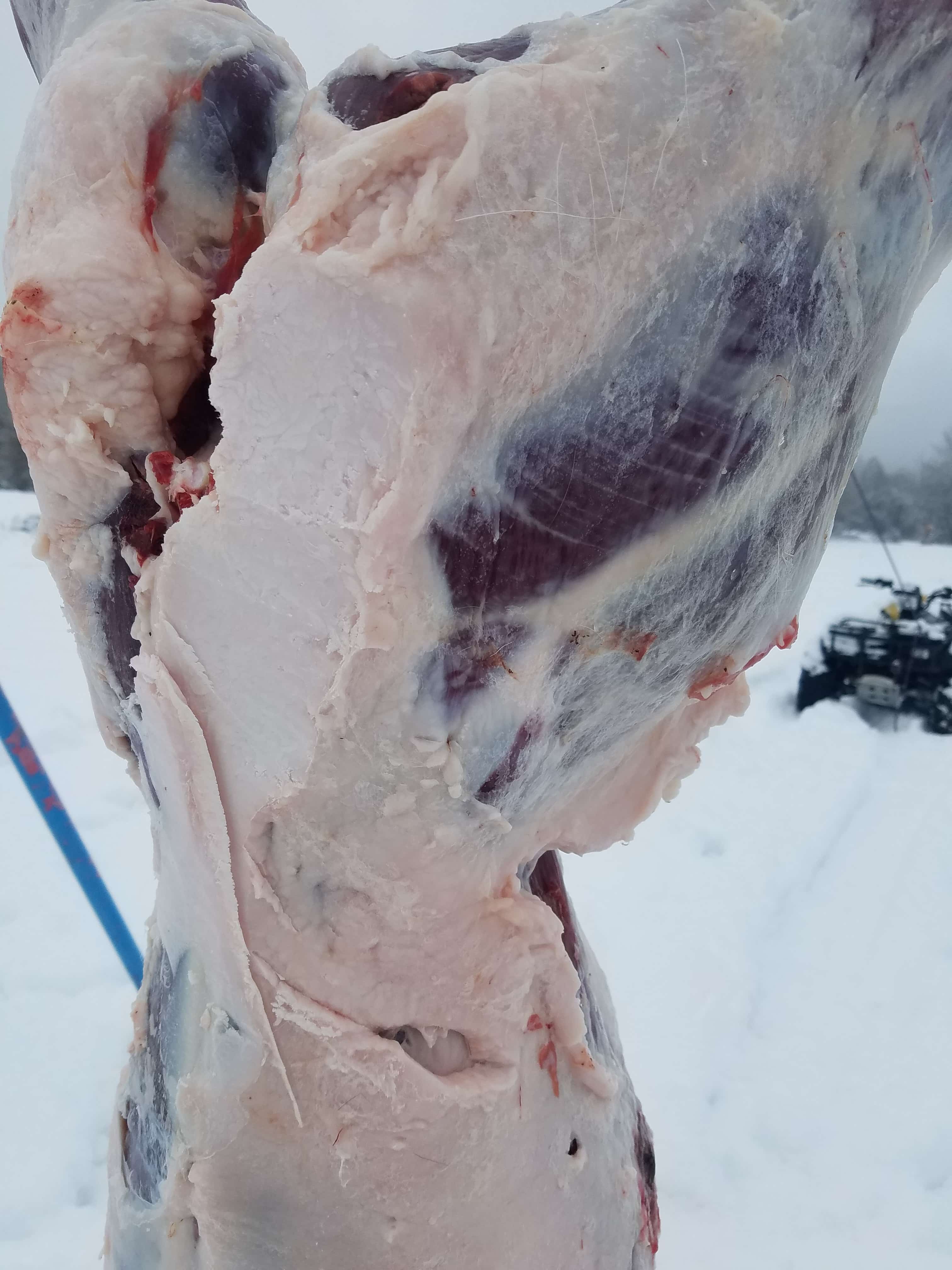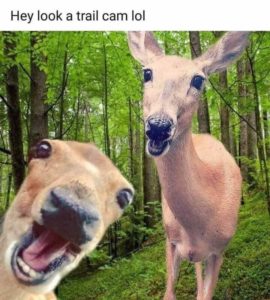How to Tell if There are Too Many Does on Your Property?
If there are too many does on the property, you will see overbrowsing of available food sources. Either food must be increased or deer numbers must be reduced. Every hunter knows that harvesting does is an important part of good deer management. But, how does a landowner tell if there are too many does and they need to be harvested? We look at the sex ratios and the browse pressure on the available forage. Use camera surveys and field checking of forage and browse to see if deer are overpopulated.
The main reason to get rid of some does is to protect the feed levels on your range or tract of land. If you have some regrowth of trees on the forest floor and some forage in food plots or natural openings, look at the browse. Educate yourself on what is preferred browse species and which ones are emergency feed. If you have food plots, it is easy to measure browse pressure with some exclusion fencing. Placing a circle of wire out in the field is a must to check what is growing well and how the deer are affecting the growth. I once visited a hunting club that had many acres of clover planted. The clover looked like it was not doing well, or that it had been mowed severely. But the exclusion cages told a different story. The clover inside the cages was 7 inches tall while the rest of the field was cut down to the ground as if mowed with a lawnmower.
I often have food plots planted in areas where there is no agriculture. This can be a problem since every deer in the area feeds heavily on the small plots, killing or devouring the plants before they get to maturity. In that case, there are too many deer on the landscape for the amount of food that is available. When we have this situation, I prescribe killing as many does as we can legally take. Not to worry, if there is a pool of deer as in large State holdings, an endless supply of animals is always able to move into your good habitat.
How to Measure Deer Browse Pressure
In winter, the time of scarcity, deer will switch to woody browse. They eat all of the new growth from the past year and any buds that are available. Buds and the new growth of trees and shrubs are very nutritious. However, some are more harsh than others. Some favorite browse plants are: pretty much any new stump sprout, especially from fruit-bearing trees, red maple, serviceberry, any native forest shrubs, blueberry buds, greenbriar, etc.
The way I can easily see if deer are overpopulated for the available food on the range is to look at what was eaten. If beech root suckers are gnawed off at snow level, you have a problem. If pine needles are being consumed you have a problem. If all of the new trees coming up from the ground are mangled by getting every bud chomped every year, there are too many deer. Greenbriar is prevalent in Pennsylvania high country. Deer like to eat the new growth from the previouse summer. But if the greenbriar is chewed off to 6 or 8 inches, that has been overbrowsed. If stump sprouts of harvested oak are chewed to where they look like a wooden brush around the edge of the stump, there are too many deer. Its not difficult to tell when deer are scraping the bottom of the browse barrel.
How to Determine Sex Ratio
To determine sex ratio, run a camera survey using some corn as bait. Do this right after hunting season. Pre-bait the sites where you want to place cameras and use about one camera per 50 acres or so. Once deer start using the corn, place a camera. Count the visitors on camera and count the fawns as 50% bucks.
Once you establish a ratio of male/female you can use that ratio to estimate the total population. To do that, we identify individual bucks and get a ratio of how many sitings per individual. We then make an assumption that the same ratio applies to the does. In other words if you have 100 buck photos and you see there are 15 individuals, then apply 15% to the number of doe photos you get to arrive at a population estimate.
Keep in mind that some bucks may be hanging out in remote places and resting alot and some don’t come to any bait.
Sex ratios will always tend toward 50/50 since fawns are born at this ratio. But if it is badly skewed, say 15-30 does per buck (including male fawns) seen on camera, then too many bucks have been taken and there are too many does in the area.
Why Don’t We Want as Many Deer as Possible?
Well, if nutrition is low, antlers and meat production go way down in individual animals. When no big bucks are seen, hunter satisfaction goes down. When the population is too high, deer can suffer and die. Millions of deer have died prolonged deaths in Pennsylvania in the 60s and 70s due to destroyed habitat and overpopulation. All it takes is an ice storm on top of a thick snow and deer will start to die in late winter.
During most of my hunting career on State land, we never shot a deer that field dressed over 100 lbs. Anything with a bone sticking out its head was shot, as it was a rare sight to see a male deer. Now, with food plots and population control, I regularly shoot does over 100 lbs and bucks up to 200 lbs. Nice and fat with plenty of healthy meat. Plus I never feel guilty that deer are out there going hungry and slowly dying.
Keep Deer Populations in Line with the Available Food and Cover
If you can grow a decent food plot and plant some trees and get native natural regeneration to grow, your population is in balance with the habitat. Once it is, you can produce plenty of deer for observation and hunting. An often-overlooked issue is that of space. Deer need to have space in order to avoid social pressure.




Coyotes keep a deer herd at healthy levels and work as nature intended…survival of the fittest. In an healthy, balanced wildlife environment, there are natural predators, not humans, to manage populations.
Humans must evolve in mental attitudes about wildlife. Why life simply isn’t there for humans to make a sport out of hunting. Humans no longer need their meat or their fur or any part of them. More and more humans are recognizing the value of wildlife to our life as they live.